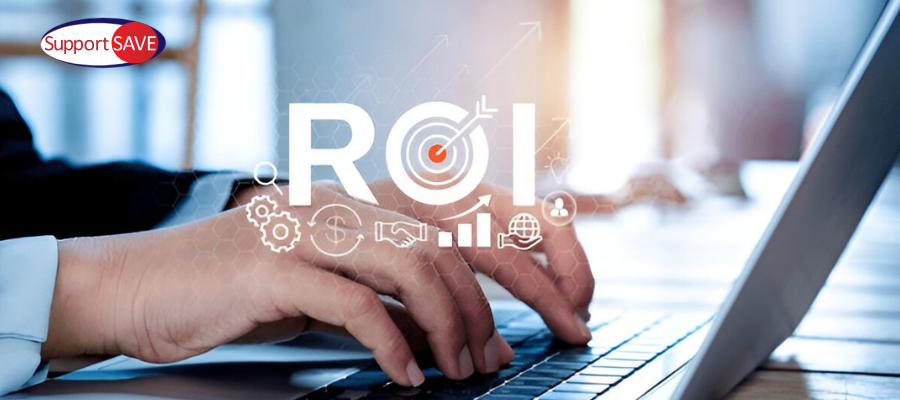Small and mid-sized businesses are under growing pressure to operate more efficiently while keeping technology reliable and secure. With remote and hybrid workforces now standard, traditional approaches to IT support often fall short—especially when fast, flexible service is needed across multiple locations.
As operations become increasingly digital and decentralized, businesses are turning to more responsive and scalable support options that align with their evolving needs. This shift is not just about convenience—it’s about ensuring business continuity, controlling costs, and enabling growth in a highly competitive environment.
Let’s explore why remote desktop it support is mission-critical for SMBs in 2025—and how it directly impacts your bottom line.
1. The Changing IT Landscape for SMBs
Today’s SMBs operate in a high-tech, high-speed ecosystem. From online transactions and remote employee access to customer service platforms and digital marketing tools, every component depends on reliable IT infrastructure.
However, most SMBs lack the internal resources or full-scale IT departments to handle complex issues, making Remote Desktop IT Support for SMBs an ideal, strategic solution. It provides instant access to expert technicians without the cost and complexity of in-house teams.
2. What Is Remote Desktop IT Support?
Remote Desktop IT Support enables IT professionals to connect to and control a user’s device from a separate location to resolve technical issues. Whether it’s software installation, virus removal, or system troubleshooting, problems are fixed quickly and efficiently—without requiring a physical visit.
This type of support leverages secure protocols to maintain data privacy while maximizing speed and convenience.
3. Why SMBs Can’t Ignore Remote Desktop IT Support in 2025
- Faster Problem Resolution
- With remote access, IT technicians can diagnose and resolve issues in minutes, not hours. This means less downtime and more productivity—crucial advantages for resource-constrained SMBs.
- Cost Savings
- Hiring full-time, in-house IT professionals can cost upwards of $80,000 annually. Remote desktop support is typically offered as a flexible monthly plan or pay-as-you-go service, drastically reducing fixed overheads.
- Scalability
- As SMBs grow, their IT needs expand. Remote support easily scales with your business, providing consistent service regardless of company size or location.
- Support for Hybrid Teams
- With hybrid and remote work environments now standard, remote IT support ensures employees receive instant assistance—no matter where they’re located.
4. Use of Remote PC Support in SMB Environments
The use of remote PC support has exploded in the post-pandemic business world. It allows SMBs to manage device configurations, software updates, and security patches across all remote devices from a centralized location. This centralized control ensures compliance and reduces vulnerabilities—something especially critical for SMBs in finance, healthcare, and e-commerce sectors.
Remote support also plays a vital role in employee onboarding, remote training, and software standardization, ensuring all employees have the same tools and access from Day 1.
5. Enhancing Business Continuity
Unexpected outages and cyberattacks can cripple SMBs. Remote Desktop IT Support for SMBs ensures systems are monitored proactively, reducing the risk of business interruption. In fact, 70% of businesses report outsourcing IT services to improve cost efficiency and strengthen their resilience and disaster recovery capabilities.
Remote support technicians can quickly restore systems from backups, patch vulnerabilities, and even shut down compromised systems in real time—all without being on-site.
6. Security You Can Trust
Many SMBs worry about the security risks of allowing someone to access their systems remotely. But today’s remote desktop support solutions use encrypted connections, multifactor authentication, and session recording to ensure full transparency and safety.
The support software complies with major regulations like HIPAA, GDPR, and SOC 2, making it safe for even highly regulated industries.
Tip: Always choose a provider that offers session logging, IP restrictions, and granular access controls for added peace of mind.
7. Remote Desktop Support Services vs. In-House IT
Let’s compare:
| Feature | In-House IT | Remote Desktop Support Services |
|---|---|---|
| Availability | 9–5 (typical) | 24/7 |
| Cost | High (salaries, training, equipment) | Flexible and lower |
| Expertise | Generalist team | Access to IT specialists |
| Scalability | Limited by team size | Easily scalable |
| Response Time | Delayed during off-hours | Instant (often within minutes) |
This comparison makes it clear: remote desktop support services provide greater value for less investment—perfect for SMBs with tight budgets and growing needs.
8. Integration with IT Help Desk Support
Many SMBs pair remote desktop services with IT help desk support, offering a complete technical support ecosystem. The help desk manages tickets, prioritizes issues, and acts as the first point of contact. When needed, issues are escalated to remote technicians who take over via desktop access.
This seamless escalation model ensures faster resolution, better reporting, and higher user satisfaction.
9. Key Features to Look for in Remote Desktop IT Support for SMBs
When choosing a service provider, look for:
- 24/7 availability
- Device & OS compatibility (Windows, macOS, Linux)
- End-to-end encryption
- Multi-user support
- Automated patching and software updates
- Audit logs and reporting tools
Also, confirm whether they offer remote pc support services across desktops, laptops, and mobile devices.
10. SMB Success with Remote IT Support
According to TechTarget, many SMBs still underestimate the importance of disaster recovery planning, leaving them vulnerable to prolonged downtime and data loss.
By implementing automated system monitoring and remote troubleshooting, the firm eliminated the need for an on-site technician—while improving employee satisfaction and reducing ticket resolution time from 2.5 hours to under 30 minutes.
11. Final Thoughts: Why SMBs Must Act Now
The demand for Remote Desktop IT Support for SMBs will only grow. As cyber threats rise, hybrid work remains dominant, and tech complexity increases, SMBs need a flexible and future-ready IT support strategy.
Remote desktop support isn’t just a cost-saving move—it’s a business enabler. It empowers small businesses to perform at enterprise levels without the overhead, risk, or downtime.
Ready to Future-Proof Your IT Support?
Looking for reliable, secure, and scalable Remote Desktop IT Support for your SMB? SupportSave is your trusted partner—our team understands the unique challenges of growing businesses. Our remote desktop support services are designed to minimize downtime, enhance security, and keep your operations running 24/7—without the burden of expensive in-house infrastructure.
Contact with us today to discover how we can tailor a remote IT support solution that fits your business needs and budget.



